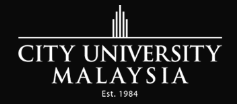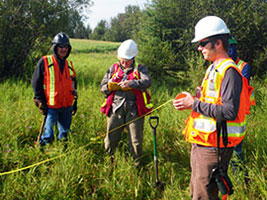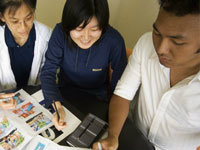Medical diagnostic and treatment technology
by StudyMalaysia.com on August 19, 2015 | Career Guide
This field is about the study of technology used in the diagnosis, prevention, monitoring and treatment of a disease or an injury or handicap. Medical technology includes the use of an instrument, apparatus, appliance, software or material for diagnostic and/or therapeutic purposes. It encompasses taking a patient history, a clinical examination, a symptom score, a laboratory test, an imaging test, a biopsy and a surgical procedure. It also includes the investigation, replacement or modification of the anatomy or of a physiological process to treat a condition.
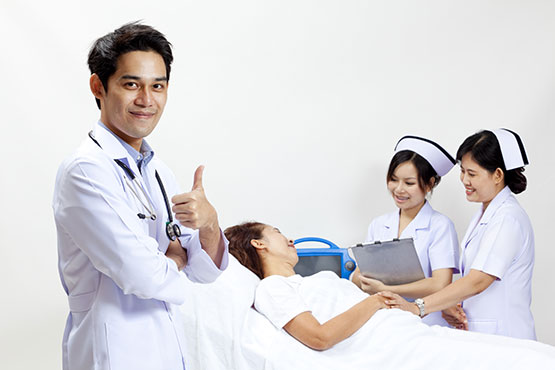
What you will learn
Medical Laboratory Technology
The sub-field of medical laboratory technology will train you with skills required to work in medical diagnostic, research and other laboratories. You will be taught how to collect samples and perform tests to analyze body fluids, tissue, and other substances. You will learn subjects like biochemistry, microbiology, haematology, transfusion science, histopathology, scientific concepts and technical laboratory skills, communication, and clinical practice and supervision.
Radiography
Courses in radiography will train you to use roentgen rays and radioactive substances for diagnostic and therapeutic purposes, to develop images, to administer radioactive isotopes and to measure glandular and other bodily activity in therapeutic, diagnostic and tracer studies, using a variety of equipment. You will be study subjects like anatomy and physiology, pathology and applied imaging, image recording physics, radiation protection, radiation techniques, clinical practice and supervision, patient care, applied psychology, computed tomography, mammography, and ultrasound.
Hearing aid technology
Hearing aid types differ in their technology or circuitry. Today, microchips, computerisation, and digitised sound processing are used in hearing aid design. You will learn about different of hearing aids and how to prescribe and fit them for patients.
Optical technology
In this sub-field, you will learn about advances in optical technologies and how to use them in procedures and treatments that assist sight, improve vision or correct defects in vision.
X-ray Technology
The sub-field of X-ray technology teaches you how to use cutting-edge imaging methods to visualize the inside of the human body. The pictures they create help physicians to diagnose and treat illnesses or injuries with great accuracy. Besides traditional X-ray machines, you may also learn how to operate computerised axial tomography (CT), magnetic resonance imaging (MRI), fluoroscopy, and film and digital mammography.
Courses offered in this field
Courses offered in this field include diploma and bachelor degree programmes. Get course listings at www.StudyMalaysia.com in the Fields of Study section under Medical diagnostic and treatment technology.
Some Examples
Bachelor Degree Programmes
Private University / College
Public University
Diploma Programmes
Possible Occupations
|
|
|
Featured Courses
1. BSc (Hons) in Medical Imaging at Mahsa University
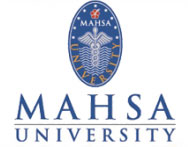 Medical imaging refers to the techniques and processes used to create images of the entire or parts of the human body for clinical purposes. Medical imaging uses non-invasive techniques that produce images of the internal aspect of the body. In radiography, x-ray radiation which is absorbed at different rates in different tissue types such as bone, muscle and fat which then forms the images.
Medical imaging refers to the techniques and processes used to create images of the entire or parts of the human body for clinical purposes. Medical imaging uses non-invasive techniques that produce images of the internal aspect of the body. In radiography, x-ray radiation which is absorbed at different rates in different tissue types such as bone, muscle and fat which then forms the images.
Procedures in radiography include computerised tomography, angiography and mammography. Other modalities in medical imaging are magnetic resonance imaging, radionuclide imaging and ultrasonography.
Mahsa University also offers the Diploma in Medical Imaging programme.
Typical subjects in this course include:
|
|
What can students who enrol in this course look forward to?
As part of their training, students are posted in Medical Imaging Departments in government as well as private hospitals throughout the country where they will gain practical clinical experience. This enables the student to develop clear understanding of what is expected of a radiographer working in the field.
MAHSA students who complete the 3-year diploma are able to upgrade their qualifications to a degree.
What are some examples of career prospects?
The prospect of employment after graduation is very good. At present there is a shortage of radiographers in the country. There are vacancies in private and government hospitals and also in other related industries thereby our students are able to find employment.
Radiographers with a degree in Medical Imaging are sought after in these areas: magnetic resonance imaging, medical ultrasound, companies related to medical imaging, academic, and management.
Entry requirements
- SPM or O-Levels: 5 credits, with 3 credits from either Biology, Physics, Maths, Chemistry or English
- Pass STPM/Matriculation/A-Level/Pre-University programme or its equivalent : CGPA 2.50 for Chemistry and Biology/ Physics
- Foundation:
- Trinity College Foundation Studies, 60% aggregate for three subjects: Biology/ Physics and Chemistry
- Foundation Studies in Science and Engineering, CGPA 2.50 including Physics and Biology
- MAHSA’s FIS, CGPA 2.50 including Physics and Biology
- Diploma in a related field from a recognised institution with:
- min CGPA 2.75 OR
- CGPA less than 2.75 with 3 years’ work experience
- UEC: 5Bs including Biology/ Physics and Chemistry
- SAM: Score 12 for three subjects Chemistry, Physics/ Biology
- UNSW/ HSC/ New Zealand Bursary / American High School with Advance Placement (AP): 60% aggregate for three subjects including Biology/ Physics and Chemistry
- IB: Min Score 24 for three subjects including Biology/ Physics and Chemistry
- CPU/CIMP/ Ontario Secondary School Diploma/ Western Australian Curriculum Council/ HSC-Sydney Australian: 60% aggregate for 3 subjects including Biology/ Physics and Chemistry
- MUFY: 60% aggregate/ CGPA 2.50 for 3 subjects: Maths, Physics and Biology
- Indian Pre-U: 60% aggregate/ CGPA 2.50 for 3 subjects - Maths, Physics and Biology
- English proficiency for international students: Candidates should have IELTS (6.0) / TOEFL (550) paper-based or equivalent
2. Diploma in Medical Laboratory Technology at SEGi University and Colleges
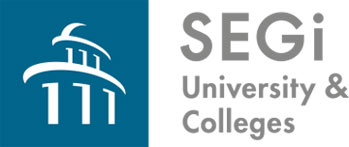 The Diploma in Medical Laboratory Technology offers a comprehensive course structure and practical aspects thay prepare students to become employable staff for many areas in the healthcare industry. The diploma programme comprises academic knowledge with practical skills in modern and well-equipped laboratories.
The Diploma in Medical Laboratory Technology offers a comprehensive course structure and practical aspects thay prepare students to become employable staff for many areas in the healthcare industry. The diploma programme comprises academic knowledge with practical skills in modern and well-equipped laboratories.
Typical subjects in this course include:
- English for science
- Fundamental Chemistry
- Human Biology
- Introduction to MLT
- Computer Applications
- Laboratory Mathematics
- Immunology
- Molecular Biology
- Histopathology
- Medical Microbiology
- Immunohematology
- Biochemistry
- Cytology
- Clinical Placement
- Medical Parasitology
- Biostatistics
What can students who enrol in this course look forward to?
You will gain educational experiences and knowledge to develop the critical thinking, technical and interpersonal skills required to be a successful medical laboratory technician. The programme will integrate knowledge gained from general education, health science and clinical laboratory science so that students will exercise good judgment, ethics and appropriate decision making abilities to serve the needs of the community and the health profession.
The programme includes a 28-week Medical Laboratory Placement in Year 2 and Year 3. The placement opportunity provides you with hands-on training in the main components of:
- Biochemistry
- Haematology
- Blood Transfusion
- Serology
- Histopathology
- Cytology
- Microbiology
- Parasitology
What are some examples of career prospects?
The Diploma in Medical Laboratory Technology provides the academic background and technical skills necessary to enter the health care system as a practising medical laboratory technician.
Entry requirements
Students must have completed O-Level Examination or Malaysian SPM / STPM Certificate or equivalent.
You May Also Be Interested In...
So you wanna be a Business Development Manager
![So you wanna be a Business Development Manager - StudyMalaysia.com]() Do you like buying and selling things? Are you fascinated by commercia...
Do you like buying and selling things? Are you fascinated by commercia...Marketing and sales
![Marketing and sales - StudyMalaysia.com]() Confident? Self-motivated? Results-oriented? These are key skills that...
Confident? Self-motivated? Results-oriented? These are key skills that...Fields of Study: Humanities
![Fields of Study: Humanities - StudyMalaysia.com]() The field of humanities includes the study of philosophy, religion and...
The field of humanities includes the study of philosophy, religion and...Fields of Study: Environmental Protection
![Fields of Study: Environmental Protection - StudyMalaysia.com]() Environmental protection focuses on solving problems arising from the ...
Environmental protection focuses on solving problems arising from the ...Why Study Mass Communication at SEGi
![Why Study Mass Communication at SEGi - StudyMalaysia.com]() Mass communication is an exciting and fast-paced field with a wide sel...
Mass communication is an exciting and fast-paced field with a wide sel...�Part 4: Choosing the Best Study Route
![�Part 4: Choosing the Best Study Route - StudyMalaysia.com]() When you have decided on your choice of career, the next important ste...
When you have decided on your choice of career, the next important ste...
















